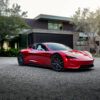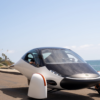Presently, just 1% of the vehicles sold in the U.S each year are fully electric. However, as 13 of the world’s most influential countries take positive action to only allow fully electric vehicles on their roads, the racing car industry is following suit by launching their own ‘super’ EVs, complete with state of the art technology. India’s first 3D titanium alloy automotive component has been built by the Indian Institute of Technology racing team and promises to “revolutionize” the EV industry. This is great news as electric vehicles are becoming increasingly sought-after and this development could help to cut the cost of EVs throughout the world.
Increased performance and specification
The student IIT Bombay racing team have launched the sixth generation electric race car, named the EVoX, which is set to make its debut at the UK’s Silverstone Circuit at the British Grand Prix this summer. The EVoX’s spindle is one of the most complex parts of the vehicle, but its new manufacturing process, which utilizes titanium rather than aluminium, has reduced the weight of the part to just 250 grams, making it 40% lighter than its predecessor. Kanishka Panda, the mechanical officer for the IIT Bombay Racing team confirmed the specification, stating: “We have achieved 40 per cent weight reduction in the wheel component of our new electric race car EVoX by using Titanium and improved its ergonomics.” Furthermore, the overall weight of the vehicle means fuel consumption and strength are optimized.
How 3D technology be the future of EVs
The EV automotive industry could soon rely heavily on 3D technology to reduce manufacturing costs and the weight of the vehicle. Bugatti Chiron announced at the start of the year that it has created the “world’s largest functional” vehicle component which had been made using 3D printing. As of yet, little is known about the performance of their creation, but the brake calipers look set to overhaul the way titanium and titanium wire is used in the manufacturing process of these green vehicles. And this is why the student IIT Bombay racing team ensured they combined the metal with 3D technology within their innovative design. Kanishka Panda stated that the method improved the “ergonomics of the wheel upright” and that the team favored titanium because of its “high strength to density ratio”.
Used in combination with 3D technology, titanium could boost the electric vehicle market by cutting the weight and increasing the durability of these vehicles. The student IIT Bombay racing team’s all electric, titanium and 3D creation is set to make its mark shortly, therefore, time will only tell if this is the future of the EV market.




